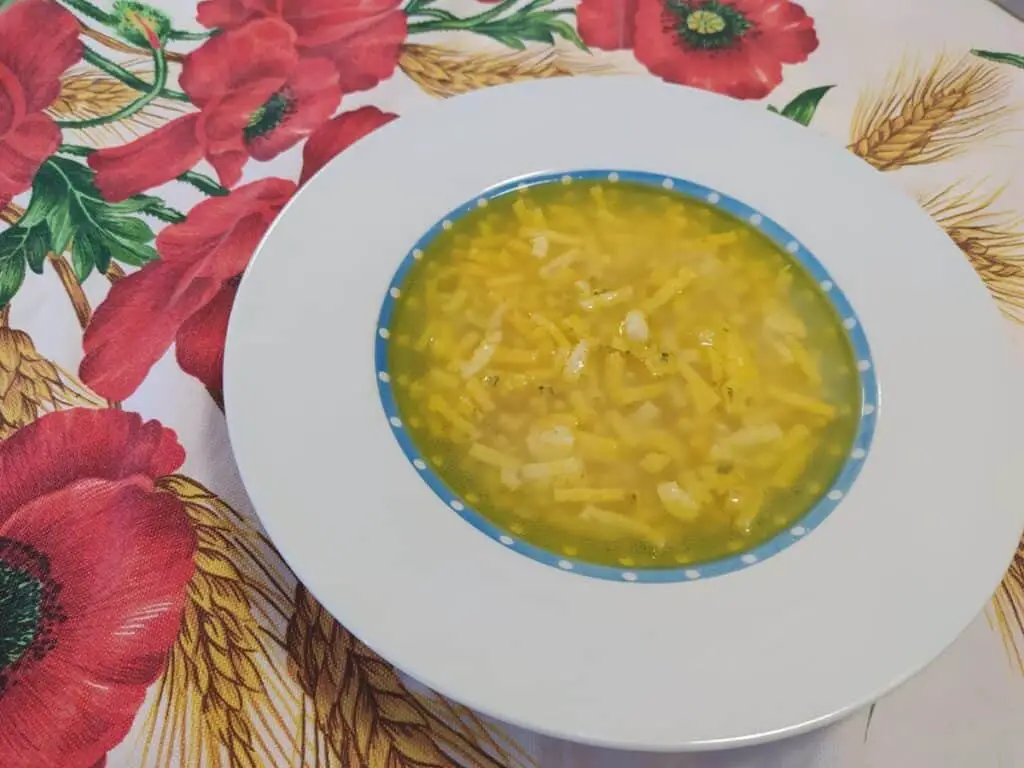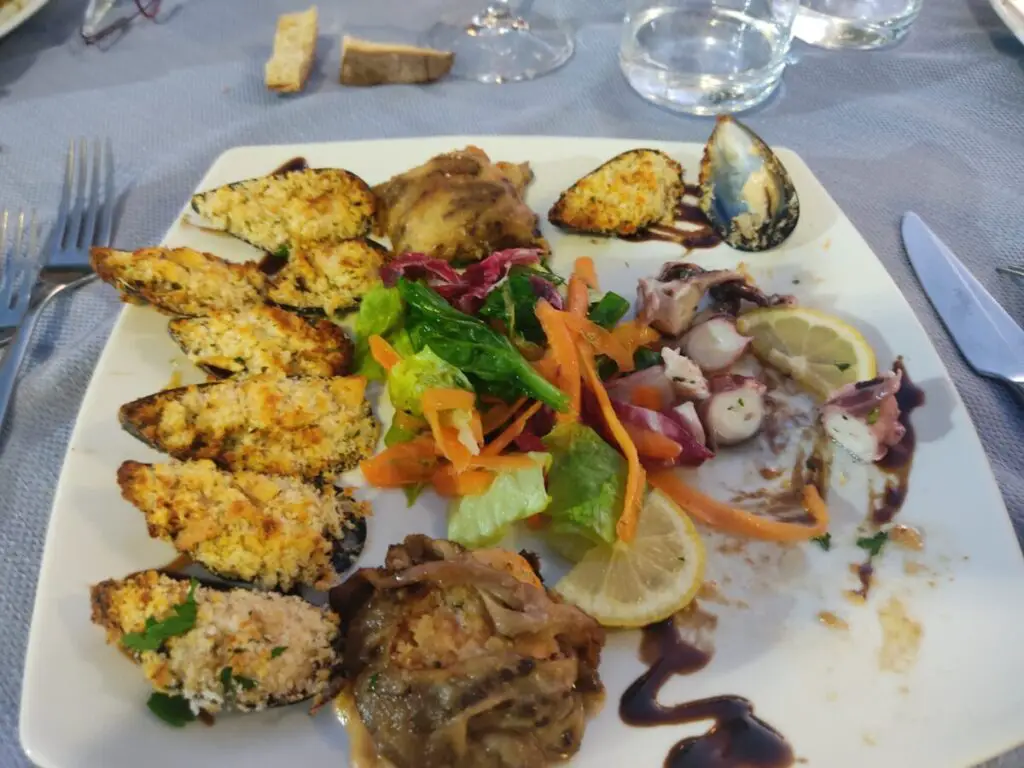Italy is famous for its cuisine, so you may have wondered what Italians eat for breakfast and what makes a good Italian breakfast.
In this post, I have surveyed seventy Italians and I have compiled the five top things that they eat for breakfast, in order of frequency. Read on to find out more!
Italian breakfast at home
For this post I asked seventy Italians what they eat for breakfast and, every time they mentioned a food, I gave that food a score of one, and did the same with the drinks.
This allowed me to come up with a ranking of food and drink that Italians have for breakfast at home in their everyday life.
The take-home message from the interviews is that the most popular breakfast eaten at home by Italians is espresso coffee on its own or in milk (called “caffè-latte”) and cookies, but read on to find out more details.

The top seven foods that Italians eat for breakfast (in order of popularity)
1. Cookies
In Italy, cookies are the most popular breakfast food that people eat at home.
If you take a stroll through the breakfast aisle of any Italian supermarket, you will see that there is a very wide choice of breakfast cookies: from the healthier type, such as plain low-fat and low-sugar cookies, to wholegrain cookies, and cookies made out of alternative flours, to cookies with cocoa powder or chocolate chips.
Cookies of the healthier type have become the most popular in recent years and so the various brands have adapted to cater for these needs.
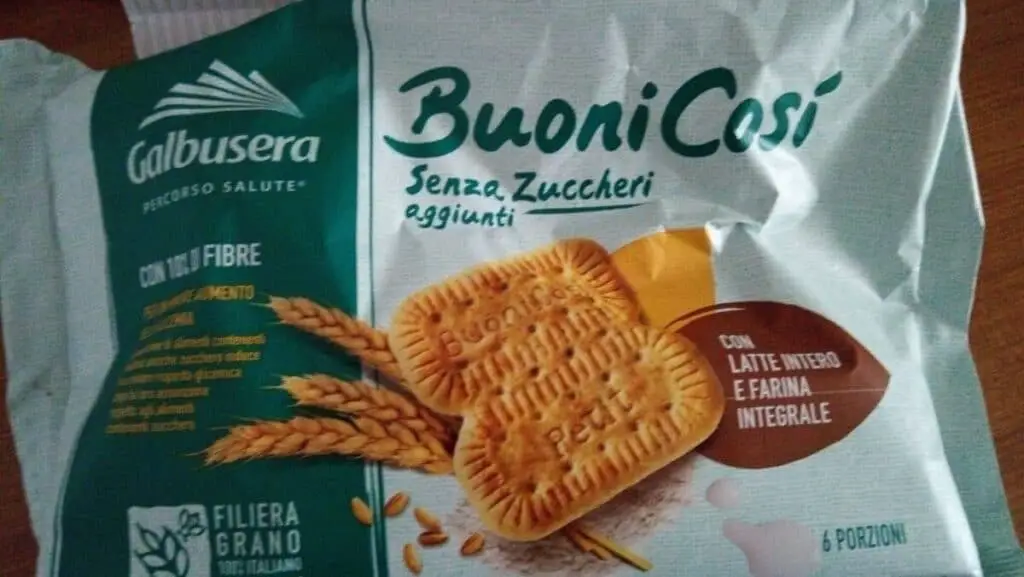
Italians only started eating cookies for breakfast in the sixties. Prior to that, in the post-war period, people ate whatever leftovers were available from the day before, stale bread being very common.
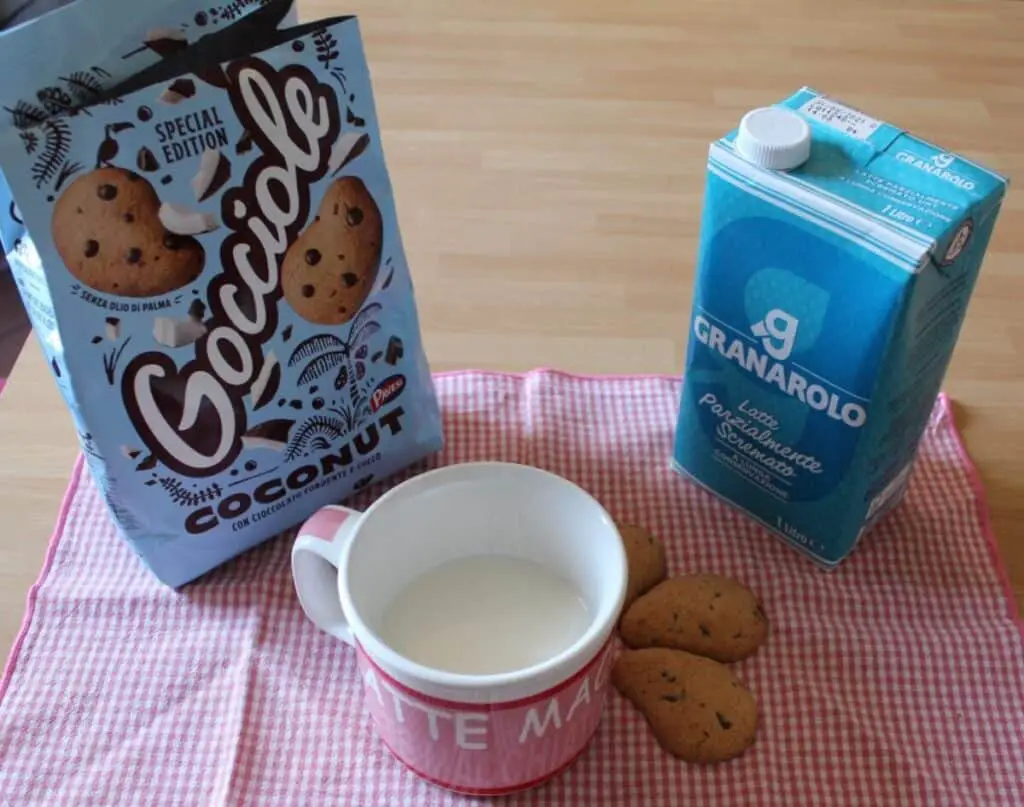
2. Crispbread (a specific kind called “fette biscottate”)
The second most popular breakfast food that Italians eat at home is “fette biscottate”, which translates as “cookie-type slices” or “doubly-cooked slices”. “Biscotto” in fact means “cooked twice”.
Fette biscottate are unique to Italy, and so they are a little hard to compare to other international products. Fette biscottate are slices of crisp bread which resemble melba toast. They are meant for spreading and dunking, although they are quite crumbly and can break easily.
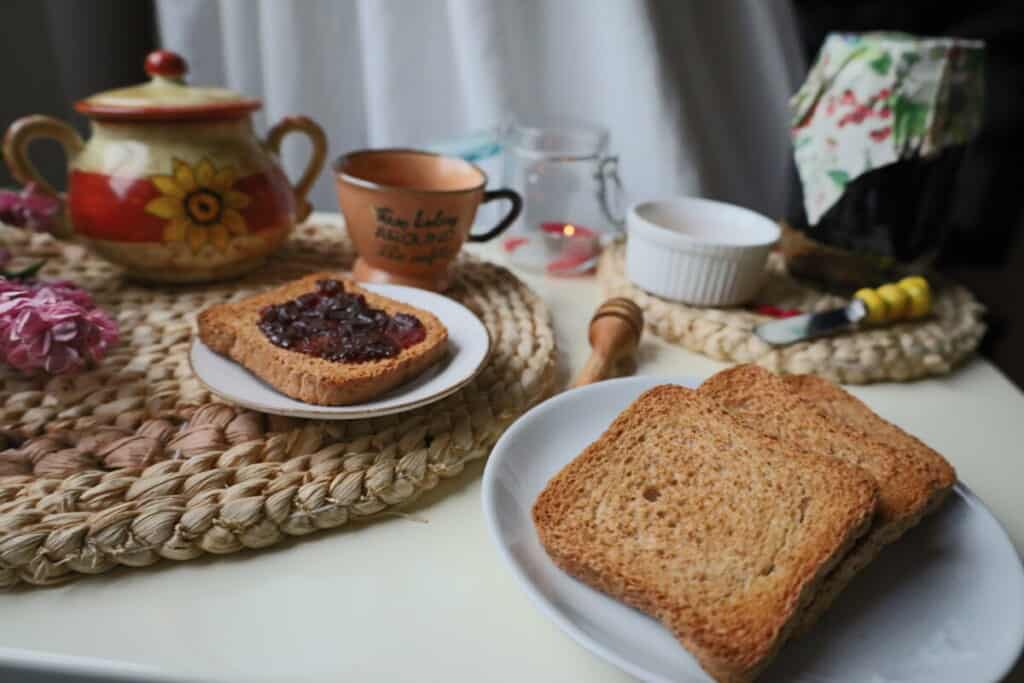
Fette biscottate have a slightly sweet flavour, and so they are not like a cracker, and are not meant to be eaten with savoury toppings.
Italians first started producing fette biscottate in the sixties, although they only became popular in the seventies when the concept of “light” food and the diet food market started to emerge. Fette biscottate are, in fact, considered a light and healthy food.

The most popular topping for fette biscottate is jelly or marmalade. Only two of the seventy people I interviewed also spread them with butter or soft cheese. Half of the people who eat fette biscottate for breakfast have them plain, with no topping on, and dunk them in mild or caffe-latte. They are great for dunking as they absorb a lot of liquid.
3. Bread
The third most popular breakfast food that Italians eat at home is bread. Most spread it with jelly or marmalade, but some also eat it with Nutella or Nutella-type hazelnut spreads. Of the seventy Italians I surveyed, only two (an elderly couple) eat plain bread for breakfast, dunked in caffe-latte.
Bread is also the most traditional of Italian breakfast foods because stale bread dunked in milk was the main breakfast across the two world wars and in the post-war period.
4. Yoghurt
Yoghurt is the fourth most popular breakfast food that Italians eat at home. Most people eat it on its own, but some have it with breakfast cereal.
5. Cakes
The fifth most popular breakfast food that Italians eat for breakfast at home is cake.
In the majority of cases, this is home-made cake, often a sponge, because it is suitable for dunking and not overly sweet.
Another popular type of breakfast cake is a pie made of a shortbread-type dough with jelly on it. This is called “crostata”.
Store-bought pre-packaged cakes, called “merendine” are also popular for breakfast, particularly among children, instead of home-made cake.
Of the seventy Italians that I surveyed, the two that ate “merendine” for breakfast were both children.
6. Cereal
Breakfast cereal is the sixth most common breakfast food that Italians eat at home. Cereals are consumed in yoghurt or milk.
7. Croissant
Croissant, also called “pasta”, “cornetto” or “brioche” in southern Italy, is a very popular breakfast food for Italians.
Croissants are mostly eaten at the bar, and more rarely as a breakfast at home.
Sometimes people buy fresh croissant from the bar the day before or you can get store-bought pre-packaged croissants from the supermarket like in many other countries.
The top seven drinks that Italians drink for breakfast (in order of popularity)
1. Coffee
Espresso coffee is unsurprisingly the most popular drink that Italians drink for breakfast.
In Italy, “coffee” means espresso. Filter coffee, also sometimes referred to by the Italians as “American coffee” (or “Americano”) is very unpopular.
Espresso is very high in caffeine content, one shot contains 63mg of caffeine. Italian espresso tastes quite strong and is served in an espresso cup.
At home, espresso is prepared on the stove using an espresso maker, although more and more families now own an espresso machine.
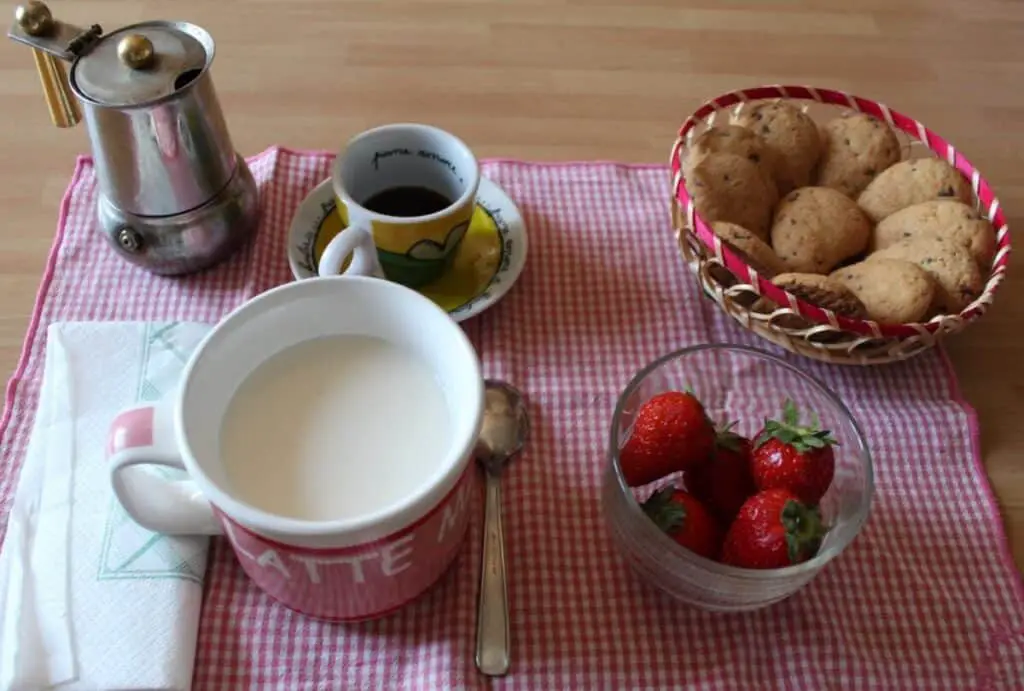
When making espresso on the stove in an espresso maker, you can control how strong an espresso you want to make, by putting larger or smaller amounts of coffee in the espresso maker.
Italians drink espresso on its own or with a dash of cold milk (“macchiato freddo”) or hot milk (“macchiato caldo”).
Coffee in the morning is usually consumed along with food, as part of breakfast, although many people drink it separately as soon as they wake up to get their much-needed caffeine boost.
2. Caffe-latte
Caffé -latte is the second most popular drink that Italians drink for breakfast.
Caffé -latte is milk served in a cup, or in a bar they serve it in a glass, with a shot of espresso in it. The milk in caffe-latte is traditionally warm, although many people have it cold, to speed things up in the morning.
3. Milk
Milk drunk on its own is the third most popular drink that Italians drink for breakfast.
Milk, warm or cold, can be used for dunking cookies, fette biscottate and sponge cakes.
Plain milk is a popular breakfast drink amongst Italian children because they are too young to have a caffé -latte. In fact, this is often how Italians begin to consume espresso as teenagers: they start with a very small amount of espresso in milk and then build up to a full espresso over months or years.
When Italian teenagers begin consuming espresso, this is often a lighter, less caffeinated version made at home in the espresso maker.
4. Barley drink (caffe d’orzo)
The fourth most popular drink that Italians drink for breakfast is barley coffee (or caffé d’ orzo), a barley drink which tastes very similar to coffee but has a milder flavour and zero caffeine.
When Italians make barley coffee at home they mostly use the instant version, like in the picture below. In the same way as for instant coffee, you just add hot water to two to four teaspoons of barley coffee powder.

Some people also make barley coffee in the same kind of coffee maker that you would use for espresso. The barley coffee you buy for the coffee maker is slightly different to soluble barley coffee, because it comes in larger grains, and it often has aniseed in it, which gives it a fresh, fennel-like aroma.
Barley coffee is also a very popular drink to have at the bar, mostly at breakfast time, but many people order it at any time of the day.
Barley coffee at the bar can be ordered in the same variations as normal coffee: with warm milk (macchiato caldo), cold milk (macchiato freddo), in an espresso cup (in tazza piccola) or in an americano cup (in tazza grande).
5. Fruit juice
Fruit juice is the fifth most popular drink that Italians drink for breakfast, and is very popular among children and teenagers.
Like most countries, Italians drink store-bought fruit juice in a bottle or a carton.
6. Tea
Tea is the sixth most popular drink that Italians drink for breakfast. I need to clarify that the word “tea” (in Italian “tè”) means either breakfast or afternoon-type caffeinated or decaf tea, or green tea (“tè verde”), but does not include any herbal teas.
Out of seventy Italians, five will drink breakfast tea for breakfast, based on the results of the interviews I did for this post. Tea is not as popular as coffee and barley coffee because it is considered to be mainly an afternoon drink.
Italians can be very particular about which times of the day are suitable for certain drinks or foods, and tea is usually considered more suitable for the 4:30 – 6pm time period.
Most of the tea that you buy from supermarkets in Italy is weaker than the tea that can be found in the US or UK and does not contain much caffeine. In fact, when I go on holiday to Italy, I bring my own tea from the UK because I am used to its higher caffeine content! A very popular brand of tea in Italy is Lipton tea.
Most Italians drink tea with lemon, not milk. If you are at a bar, some waiters will ask you if you prefer milk (“tè al latte”) or lemon (“tè al limone”) with your tea, but the default is lemon, so some waiters will just assume that you want lemon and will serve you black tea with a slice of lemon on the side of the cup or in the tea.
7. Freshly squeezed orange juice
Freshly squeezed orange juice is the seventh most popular drink that Italians drink for breakfast. Out of the seventy Italians I interviewed, two drunk freshly squeezed orange juice for breakfast.
Freshly squeezed orange juice is not top of the list for popularity as a breakfast drink in Italy, although it still made it in the top seven most popular drinks.
Freshly squeezed orange juice is more commonly found in hotels, because these serve a wider variety of foods for breakfast.
Italian breakfast “at the bar”
Many Italians eat breakfast at the bar, instead of at home.
Breakfast at the bar is a popular choice for working people, who stop by the bar before going to work, but it’s also a socialising opportunity for friends, work colleagues and families.
Cappuccino or espresso coffee with pastry (which can be called “pasta”, “cornetto” or “brioche”, in southern Italy) is by far the most popular breakfast that Italians have at the bar.

Italian breakfast pastry of the “pasta” and “cornetto” type, which are very similar to croissant, can be empty (“vuoto”) or contain various fillings: custard (called “crema”), jam, marmalade, Nutella or a similar hazelnut and chocolate filling, or honey (usually in a wholegrain pastry).
Other popular Italian breakfasts that are eaten at the bar are freshly squeezed orange juice and sandwiches (called “tramezzini”) which are made with plain white bread and usually come with ham, cheese, tomatoes and tuna, or ham, mayonnaise and mushrooms.
Are there regional differences in the Italian breakfast?
Cappuccino and espresso coffee are by far the most popular breakfast drinks, and they are consumed throughout Italy.
In southern Italy, the pastry that often accompanies espresso coffee or cappuccino resembles more a brioche bun (like in the picture below) and is called “brioche”. This brioche bun is slightly sweet and plain, with no filling. The pastry in central and northern Italy is flakier, very similar to that of a croissant and can contain various fillings.
In southern Italy, a typical breakfast consists of slush (“granita”), which can be made with either coffee, lemon, almonds or other fresh fruit, depending on what is available, such as blackberry and mulberry.
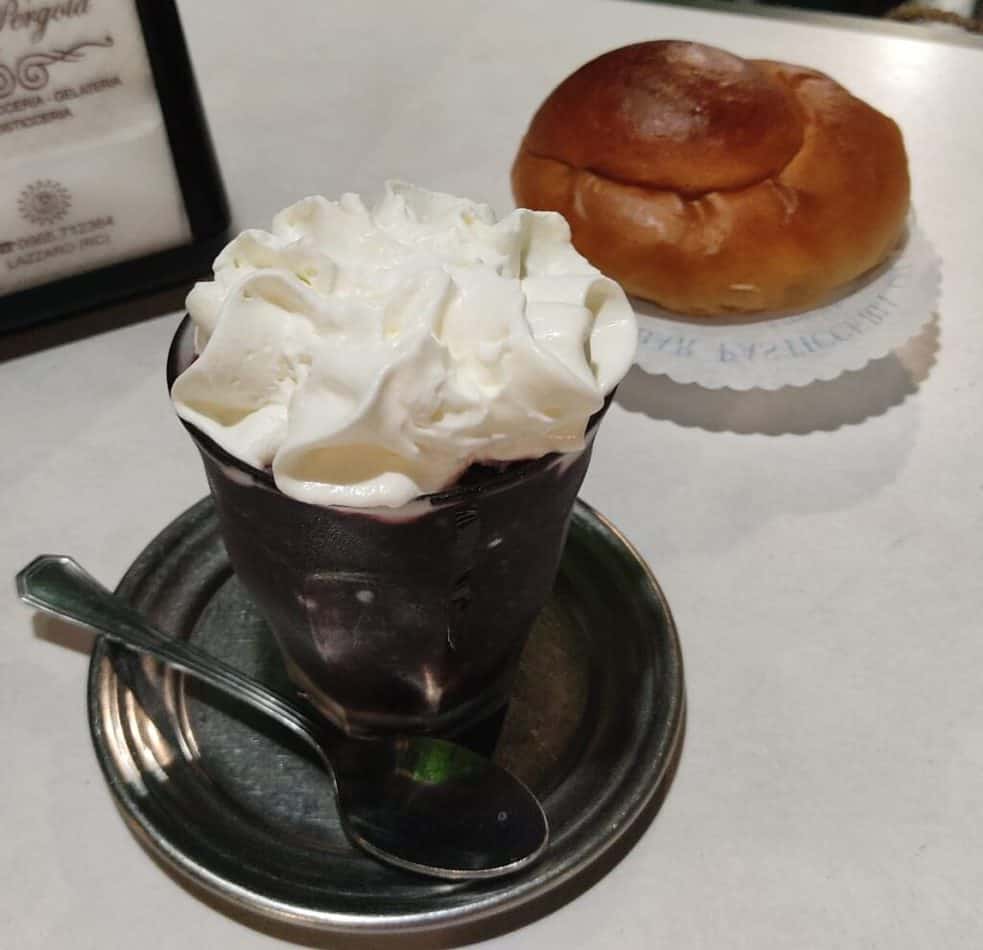
Breakfast slush in southern Italy is often topped with whipped cream and accompanied by a brioche, like in the picture below, where you can see a blackberry slush and a coffee slush.
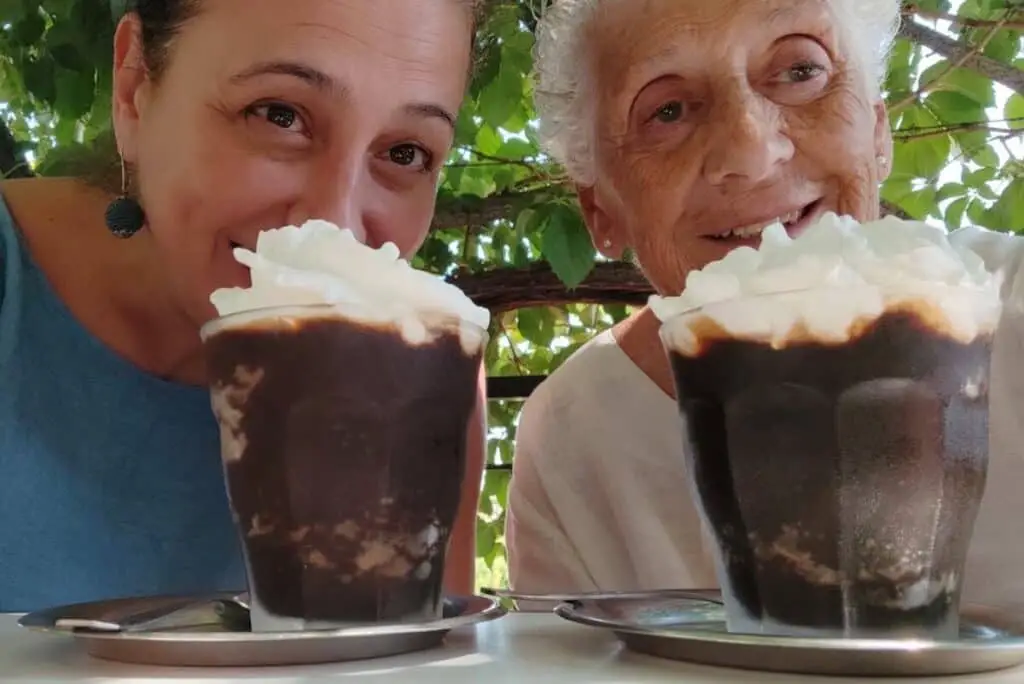
Why is the Italian breakfast sweet?
Only six of the seventy Italians that I interviewed have a savoury breakfast.
Italians only begun consuming sweet foods for breakfast in the sixties, when Italy’s economic growth started. In the post-war period, people ate what was available, often whatever was left over from the day before, but primarily stale bread.
A survey of Italians showed that there are four reasons why Italians prefer a sweet to a savoury breakfast:
- A sweet breakfast gives them a burst of energy
- A sweet breakfast tastes nicer
- Breakfast is considered the time when sweet foods are eaten
- A sweet breakfast is more easily digested
The survey also found that 68% of Italians add sugar to their espresso as well.
Is Italian breakfast healthy?
The typical Italian breakfast, consisting of coffee or cappuccino with cookies or jam on crispbread (“fette biscottate”), only contains simple carbohydrates (sugars) and fats.
Scientific studies in more recent years have highlighted the negative effects of a breakfast that lacks protein. A sugar-only breakfast raises blood sugar levels too quickly, leading to a sharp decrease in blood sugar later on which will make you feel hungry again soon.
Health experts now recommend that protein should be present at breakfast to promote a healthy insulin response but, unfortunately, no protein is present in a typical Italian breakfast.
As a general rule, however, Italians are careful about what they eat so, although they eat sugary and carbohydrate-rich foods for breakfast, their overall daily intake of sugar is not excessively high. This is because dessert is mainly reserved for celebrations and family meals at the weekend, and alcohol consumption is low.
Italians are now also gradually starting to introduce protein in their breakfast, as knowledge of what makes a healthy breakfast is spreading and reaching people.
Of the seventy Italians that I interviewed, five ate a sandwich for breakfast, where the filling contained some protein, one ate cold meats, one ate walnuts, one ate spreadable cheese, one ate Ricotta cheese and one ate pancakes, which was advised by a nutritionist.
It is possible that we might see the Italian breakfast switching to more savoury foods in future.


